Rec Sports
From sport to corporate risk: How concussion claims are reshaping liability cover | Analysis
As concussion-related litigation gathers pace, a series of landmark UK test cases involving football, rugby union and rugby league could have far-reaching implications for risk professionals working in or around sport. The outcomes of these group litigation claims are expected to clarify the legal responsibilities of national governing bodies when it comes to concussion risk […]

As concussion-related litigation gathers pace, a series of landmark UK test cases involving football, rugby union and rugby league could have far-reaching implications for risk professionals working in or around sport.
The outcomes of these group litigation claims are expected to clarify the legal responsibilities of national governing bodies when it comes to concussion risk management. That, in turn, could influence how insurance markets respond to historical exposures and future underwriting in sectors such as professional and amateur sport, schools, youth programmes and grassroots clubs.
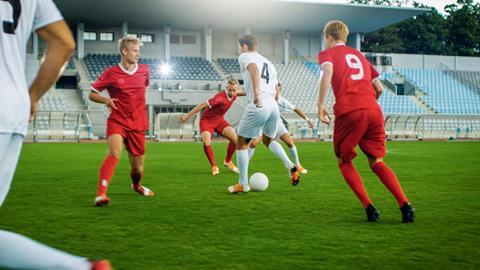
For risk managers operating in these environments, the implications are becoming harder to ignore. Not only could these cases establish new standards for what constitutes adequate risk governance in sport, but insurers are already reassessing their appetite for underwriting long-tail injury risks. The result could be tighter coverage, rising premiums, or even unavailability of cover for certain organisations.
Imogen Mitchell-Webb, associate partner at Horwich Farrelly and head of its sports team, told sister-publication Insurance Times: “There isn’t precedent for this type of thing. There isn’t any concussion case law that we can look at. [These test cases] will be really important at settling whether or not you can sue for historical risk management of concussion risks.”
The claimants – a mix of former professional and amateur athletes – argue that sporting bodies failed to implement appropriate concussion protocols at the time they were playing. Although all three test cases remain in early proceedings, they could pave the way for greater legal clarity and spark wider risk and insurance repercussions.
Risk management, protocols and prevention
Mitchell-Webb noted that there are a number of best practice protocols already in place to mitigate sports linked concussion injuries – including the ‘if in doubt, sit them out’ approach adopted in grassroots sport, which sees coaches removing players from games if there is a suspected concussion – but resource constraints and inconsistency in delivering this method at lower, amateur levels remains a problem.
“The challenge is enforcing that [approach] from top level right through to grassroots,” she said. “[Coaches] are responsible for the kiddies playing on a Sunday, right through to England playing New Zealand in the Six Nations.”
Education is another crucial part of the puzzle.
“If you don’t know what concussion is, you can’t diagnose it,” Mitchell-Webb said, highlighting the burden on volunteers and grassroots referees to know what to look out for in the event of a concussion.
Harry Black, chief executive at Meliora Medical Group – which runs Return2Play, a UK provider of independent, medically led concussion care in school and youth sport – echoed Mitchell-Webb’s view about the need for improved education and risk management.
He said: “There has been significant progress in recent years, especially at the elite level. However, it’s my belief that governing bodies must do more to ensure that robust concussion protocols, education and medical access extend to grassroots and school sport, where most sport participation happens.
“There is still too much inconsistency in how concussions are recognised and managed outside of professional settings.”
He also emphasised the critical role of those on the front lines of youth sport. “Many grassroots coaches and volunteers are still unaware of current best practices,” he said.
“There is an urgent need for standardised training – backed by governing bodies – to help those at the coalface of youth sport [to] identify, remove and refer players with suspected concussions.”
The impact on insurance
With hundreds of claimants across multiple sports under review, the implications for insurers are vast.
“Players involved in this litigation have played over many decades and insurance obviously is renewed every year and it sometimes moves around to different insurers,” Mitchell-Webb said. “So a lot of the market is involved in this just because it historically goes back so far.
“[Manchester United and England footballer] Nobby Stiles’ family are involved in the football claim, for example, and he was one of the 1966 World Cup winners. So that shows you how far back this issue goes.”
And with the possibility that liability for concussion injuries could rest with different levels of the sporting hierarchy – from national bodies like the Rugby Football Union (RFU) or the Football Association (FA), to global organisations such as World Rugby – insurers could be exposed across many years and layers of cover.
“If [these organisations] were all found to be liable, it would be split between all of their insurers,” Mitchell-Webb noted.
She added, therefore, that “lots of insurers” could find themselves with clients that are liable for historic claims as a result of these test cases.
The price of injury
Quantifying the potential losses that could arise from such claims is difficult, however.
Claims linked to concussion injuries could range from relatively minor complaints to severe, life altering conditions. Mitchell-Webb explained that claims could run from £10,000 to £20,000, all the way up to millions of pounds “if somebody is disabled and if their working career was cut short”.
All in all, Mitchell-Webb said the insurance industry could be looking at claims worth “hundreds of millions” – and that this potential financial risk is already shaping the market, with appetite for insuring contact sports shrinking.
“The appetite from the insurance industry to cover these types of sports and these types of risks now is limited,” Mitchell-Webb explained. “Brokers that we speak to have fed back that it is getting harder to place these risks.
“Typically, [these injury] risks tend to be split up into smaller layers nowadays and [brokers] have to engage the whole market to get these risks covered. Back in the day, when maybe less was known, there was more appetite.”
What happens next?
The UK’s High Court is currently considering whether to allow the test case litigation to proceed as group cases, but Mitchell-Webb predicts it will be “a couple of years” before the industry learns anything substantive in terms of hearings.
Despite this, the impact on insurers is already being felt – and that uncertainty is only likely to grow.
“An answer is always better than a grey area,” she said. “And we’ve got a grey area at the moment.”
If the legal system finds in favour of claimants, it could drive significant changes to how insurers underwrite sports risks.
For risk professionals working in sport or related sectors such as education, charities or youth development, these cases serve as a timely reminder to review historical exposure, risk protocols and insurance arrangements.
As legal definitions of acceptable concussion management are tested, insurers are already reassessing their appetite for long-tail liability. Those responsible for managing risk in sport-linked environments should act now to ensure best practice is embedded and cover remains accessible.
Rec Sports
All Heart, All Hustle: Copper City and Mile High Shine on the Diamond
By John Robbins | Butte Sports The medals are shining. The bats were hot. And the hearts? Bigger than ever. This week, two Butte squads — the Copper City Allstars and the Mile High All Stars 10s — reminded us what this community is made of: grit, pride, sportsmanship, and unity. Both teams delivered dominant […]

By John Robbins | Butte Sports
The medals are shining. The bats were hot. And the hearts? Bigger than ever.
This week, two Butte squads — the Copper City Allstars and the Mile High All Stars 10s — reminded us what this community is made of: grit, pride, sportsmanship, and unity.
Both teams delivered dominant performances in tournament play, earning hardware and spotlighting the rising stars of Butte’s baseball and softball future.
Copper City Allstars
No. 2 Seed | Western Regional Tournament in Missoula
Next Game: Tuesday at 12 p.m.
The Copper City girls fought through a grueling weekend slate, finishing pool play at 5-3 and closing strong with a 16-0 blowout win over Oregon District 8, securing the No. 2 seed heading into Tuesday’s bracket.
Taylor Regan paced the offense with a 3-for-4, 4-RBI, 4-stolen base performance. Brit Klima knocked in 5 runs. Mattie Stepan, Allie Becker, Cliry Conway, Kendallyn Schad, and Lilly Sandoval each tallied multi-hit games, while Aspen Shaffer and Savannah Stosich teamed up for a one-hit shutout in the circle.
But what stood out most wasn’t just the stat sheet. It was the yellow ribbons.
Before the game, the Allstars tied yellow bows in their hair to honor their teammate and fellow Copper City player, Grace Underwood, who wasn’t on the field but remains deeply part of the team’s spirit.
Grace, this one’s for you. Butte is proud of you — and proud of them.
Copper City Allstars Roster
- Taylor Regan
- Brit Klima
- Mattie Stepan
- Allie Becker
- Cliry Conway
- Kendallyn Schad
- Lilly Sandoval
- Aspen Shaffer
- Savannah Stosich
- Izzy Stepan
- Aubree Connors
- Harper Cooney
- Grace Underwood (in spirit and support)
Mile High All Stars 10s
District 2 Champions | State Hosts (July 25–27)
The Mile High 10s were making plenty of noise of their own — going 3-0 to capture the District 2 title and earning the right to host the Montana State Tournament next weekend in Butte.
They outscored their opponents 54-10, steamrolling through Americans, Anaconda, and MJWSLL.
Standouts included:
- Kobin Kujawa – 4-for-4 with 5 RBIs in the championship game; 7 Ks in 2.2 IP
- Beau Benski – Complete game 1-hitter with 7 Ks; added 5 RBIs vs. MJWSLL
- Chase McQueary – 4 runs scored in title game and 6 Ks in relief
- Cade Salo – Perfect 3-for-3 vs. Anaconda with 5 Ks on the mound
- Odin Dixon, Clay Salo, Case Chambers, Hudson Clary, Jaxon Bair, Rhett Johnson, Hunter Liston, and Cash O’Connor – all contributed clutch hits, smart base running, and strong defense.
Mile High All Stars 10s Roster
- Kobin Kujawa
- Beau Benski
- Cade Salo
- Chase McQueary
- Odin Dixon
- Clay Salo
- Case Chambers
- Hudson Clary
- Jaxon Bair
- Rhett Johnson
- Hunter Liston
- Cash O’Connor
More Than Just a Game
What unites both of these teams is bigger than stats. It’s the character, the class, and the camaraderie they show — not just in the wins, but in the way they carry themselves.
From yellow ribbons to dugout chants, Butte’s young athletes reminded everyone this week that they don’t just play for the name on the jersey — they play for each other.
We’ll be covering both tournaments as they unfold. Until then, let’s pack the stands, wave the flags, and show these teams how much Butte is behind them.
Rec Sports
The Basketball Player Who Gave up His US Passport for a Life in Korea
This as-told-to essay is based on a conversation with Lee Seung-jun, a 47-year-old retired professional basketball player who represented South Korea internationally. His words have been edited for length and clarity. A mix of my American dad’s height and my Korean mom’s identity took me places — literally. I was born in the US and […]
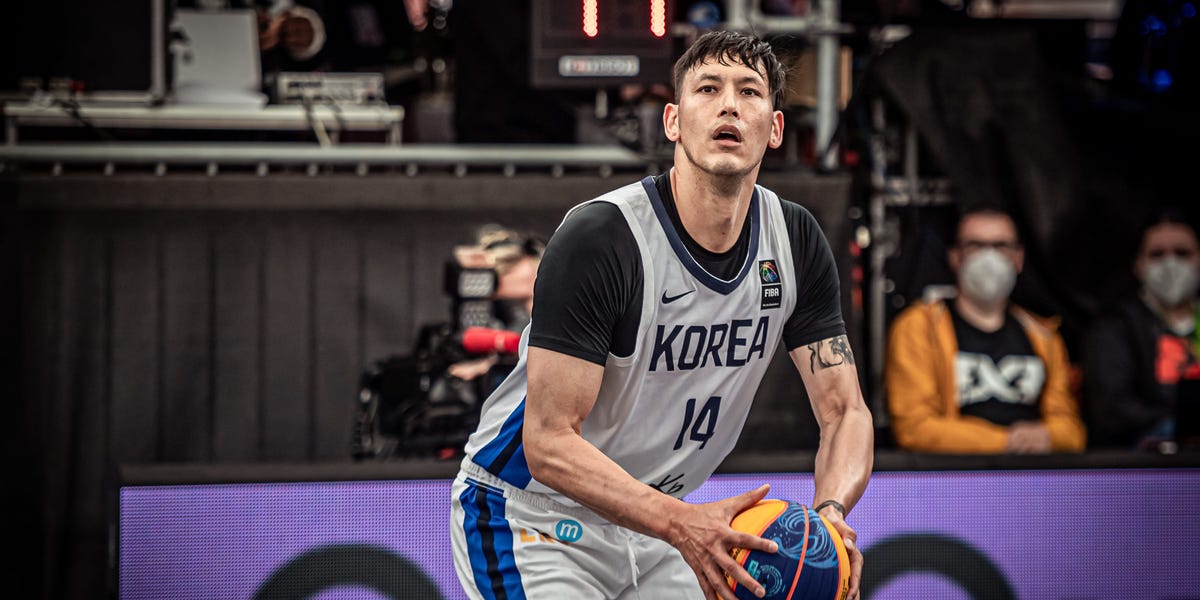
This as-told-to essay is based on a conversation with Lee Seung-jun, a 47-year-old retired professional basketball player who represented South Korea internationally. His words have been edited for length and clarity.
A mix of my American dad’s height and my Korean mom’s identity took me places — literally.
I was born in the US and grew up as Eric Lee Sandrin, but after moving to Korea and giving up my US passport, I became Lee Seung-jun.
I went on to play professional basketball and on the Korean national team. Both sides of my family shaped me in different ways.
Settling down in Seattle
My dad is 6-foot-7 and played basketball through college, then later for the Army team. He met my mom while stationed in Korea. After completing his service, they moved to Washington state to settle down. My dad loved the mountains, and my mom liked being closer to Korea.
My younger brother and I were raised in the suburbs of Seattle, although we often spent summers in Korea.
Over the years, we started bringing other members of the family to the US, my grandmother, uncles, and aunts. Little by little, almost all of them ended up moving to the Seattle area, opening up small businesses like grocery stores and karaoke bars, similar to other Korean immigrants in the area.
Provided by Lee Seung-jun
In between cultures
At school, we were usually the only Asian kids in class. At home, everyone looked like us. It created a constant push-pull: Korean at home, American outside.
At school, kids would say, “Are you guys Chinese?” And we’d say, “No, it’s a different country.” And they would say, “Oh, Japanese?”
When we visited my dad’s family in Michigan, our cousins didn’t know what we were; they hadn’t seen people like us in the Midwest.
My mom worried about prejudice, so we didn’t grow up speaking Korean. She wanted us to be American first, even as she struggled to learn English herself.
Court vs. classroom
I started shooting hoops when I was around six. In our early teens, we’d just head to the park and play. It wasn’t until high school, when coaches started sending letters and offering scholarships, that I thought, “Wow, I might actually get to play basketball in school.”
I ended up enrolling at the University of Portland, and later, after a knee injury, transferring to Seattle Pacific University — I played for both of the schools’ teams.
After graduating, I got a teaching certificate and lined up a job teaching at a high school.
FIBA3x3
Change of plans
Then I chose basketball instead.
My mom thought I was throwing it all away. My brother was planning to be a lawyer, and she had dreams of bragging about us to her coffee group.
But by then, basketball had become my life, my brother’s too.
When I didn’t make it to the NBA, I started building an international career, including a brief stint with the Harlem Globetrotters. I was still chasing the NBA dream when a Korean agent suggested I try out for teams in Korea.
I suggested that my brother go first. He loved it and told me, “You have to come.” So I did.
To play for the South Korean team, I had to give up my US citizenship. My dad, a military vet, wasn’t happy. He reminded me that family members had died fighting for the US. He thought it was rash.
But after we talked it through, he understood. For me, it was about finding a better opportunity, just like his grandparents had done when they came from Italy.
Restarting in Korea
When I arrived in Seoul, I had just turned 30. At first, Korea felt familiar. The faces and food reminded me of my mom. But once I got deeper into the culture, I realized how different I was. I didn’t speak the language and hadn’t done military service.
Basketball practice in Korea felt like military training. We practiced four times a day: 6 a.m., 10 a.m., 4 p.m., and 8 p.m.
That’s also when I started realizing just how many unspoken rules there are in the Korean language and culture.
I remember one of my first practices, I walked in, sat down, and started lacing up my shoes. I was sitting in the head coach’s chair, but I had no idea that was a big faux pas.
So I was sitting there when the coach walked in. I went, “Oh, what’s up?” I didn’t even greet him properly. I didn’t know any of this stuff. The whole team was like: “How can he be so rude? How does he not know this?”
Provided by Lee Seung-jun
That moment really pushed me to start learning the unspoken rules and study the language.
I eventually changed my name to Seung-jun, a name crafted with my mom’s help. It means “beautiful victory,” and links to my brother’s name Dong‑jun — he grew up as Daniel.
When I was growing up in the States, my grandma used to talk to us for hours, but we could hardly understand her.
After learning to speak Korean, it was like meeting my grandma for the first time. I could actually talk to her and understand what she was saying.
Provided by Lee Seung-jun
Off the court, still in the game
In 2017, I retired, although I knew I wanted to stay in Korea. It felt like home.
The healthcare system is amazing. My wife, who’s half-Korean, half-Romanian, is also a basketball player and is still playing.
A year after retiring from basketball, before my brother eventually got a green card and moved back to the States, we started Prism Hoops Academy. The youth sports company is focused on making sports fun for kids. In Korea, education is intense and regimented. Our goal was to create a space where kids could just play.
Provided by Scholar Basketball; Photographer Desmond Pang
I’m now running the school with Im Won‑jun, another Korean American who, funnily enough, also grew up in Seattle.
We offer basketball, soccer, and chess. It’s not about drills or perfection; our goal is just helping kids build positive memories.
Coaching young kids has become a real passion of mine, and my plan is to go back to school for a higher degree in education or administration.
So it looks like my mom will get her teacher after all.
Got a personal essay about moving abroad that you want to share? Get in touch with the reporter: akarplus@businessinsider.com.
Rec Sports
‘You don’t feel alone’: Du Quoin, Illinois, sports camp for kids with limb differences continues to inspire
“You’re not put in this situation to struggle. You’re put in this situation to thrive, and we’re going to show you how,” camp founder Sam Kuhnert said. DU QUOIN, Ill. — It’s evident from the moment you arrive at Du Quoin High School that the NubAbility All Sports camp is a special place to be. […]

“You’re not put in this situation to struggle. You’re put in this situation to thrive, and we’re going to show you how,” camp founder Sam Kuhnert said.
DU QUOIN, Ill. — It’s evident from the moment you arrive at Du Quoin High School that the NubAbility All Sports camp is a special place to be.
For 14 years, the camp has been letting kids with limb differences play sports and find their confidence.
NubAbility is the brainchild of Du Quoin native, Sam Kuhnert. He saw a need after attending a limb difference sports camp when he was younger — and a calling to fill a need for kids like him.
“I voiced it to my mom and she said one of the most powerful statements I’ve ever heard: ‘I would’ve driven you across the country to get you in front of you when you were cut from your sixth-, seventh-and eighth-grade baseball team,'” Kuhnert said. “A week before we became a nonprofit, I was diagnosed with a life-debilitating disease and given a few months to live. And the good Lord gave me a second chance and I had promised him if he gave me that second chance I would live this life to serve him and serve others.”

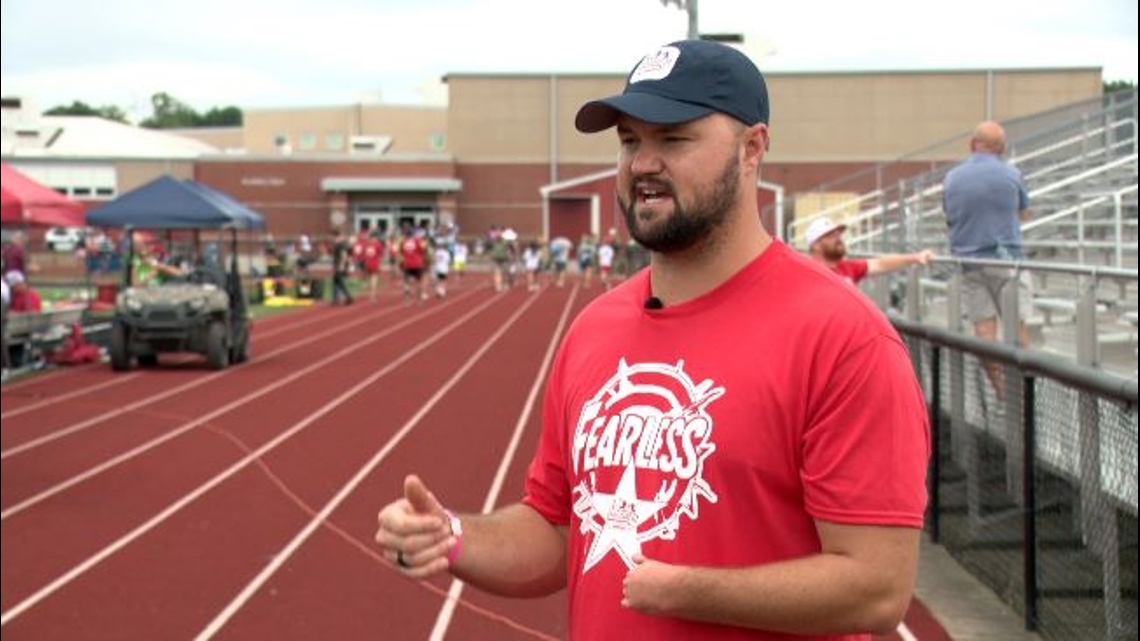
Kuhnert’s first camp had 19 campers. Since then, they’ve hosted 80 camps, welcoming kids from 49 states and 11 countries.
From basketball to archery to football to wrestling, kids get to embrace their athletic dreams in just about every sport. And they get to do it alongside kids and coaches who look just like them.
“I’ll be honest with you, this is one of the best things I’ve ever done in my life,” NubAbility coach David Mohn from Harrisburg, Pennsylvania, said. “I never had anyone have the ability to teach me how to do these things and to be able to be proficient at it and to be able to teach the kids who look like myself so they have an upper hand already to compete in these sports.”
“They’re surrounded by people the same as them. They’re not standing out. They’re not different,” Du Quoin teacher and coach Shane Boyett said.
Over its history, the camp has hosted more than 2,200 kids from all over the country. But no matter where they come from, there is a universal message.
“What I love most about this is it’s just fun to be in community. Being able to meet people like you. Being able to understand one another,” said 14-year-old camper Grayson Daily, who lives in Dallas. “It’s also fun to be able to know that you’re not alone in the hardship, and know that you can do anything you put your mind to. And sometimes people will say, ‘You can’t do this or you can’t do that, but you can.’”

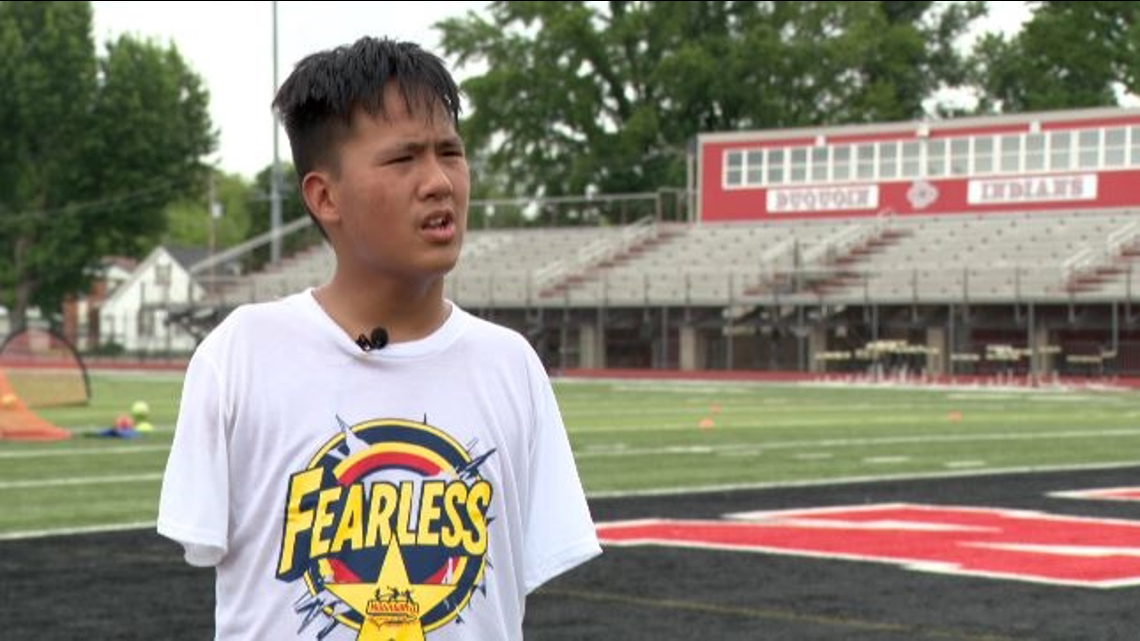
“It’s really nice because you don’t feel alone. And everyone has the same experience as you,” first-year camper Sydney Hodel from Bloomington, Illinois, said. “You don’t have to worry about people making fun of you or being different. Everyone’s unique.”
“You’ll watch kids come into our camp and they’ve hidden their limb difference away and they’re a little shy. A lot of our kids come from small town, rural areas all over the country, so to them, this is the first time they’re ever seeing someone like them let alone adults or kids,” Kuhnert said.
No matter where they come from, NubAbility has a scholarship program to make sure any kid can come and participate.
“The joy of watching someone own who they are, and not just own who they are, but knowing that the only person who can limit them is them, that’s just the joy you can’t even really put a price tag on,” Kuhnert said.
“What he’s done here and the hard work and his family, everything they’ve put into it. It’s a special week. And of course we’re proud of Sam. The whole town’s proud of Sam and hopefully it continues to keep growing,” Boyett said.

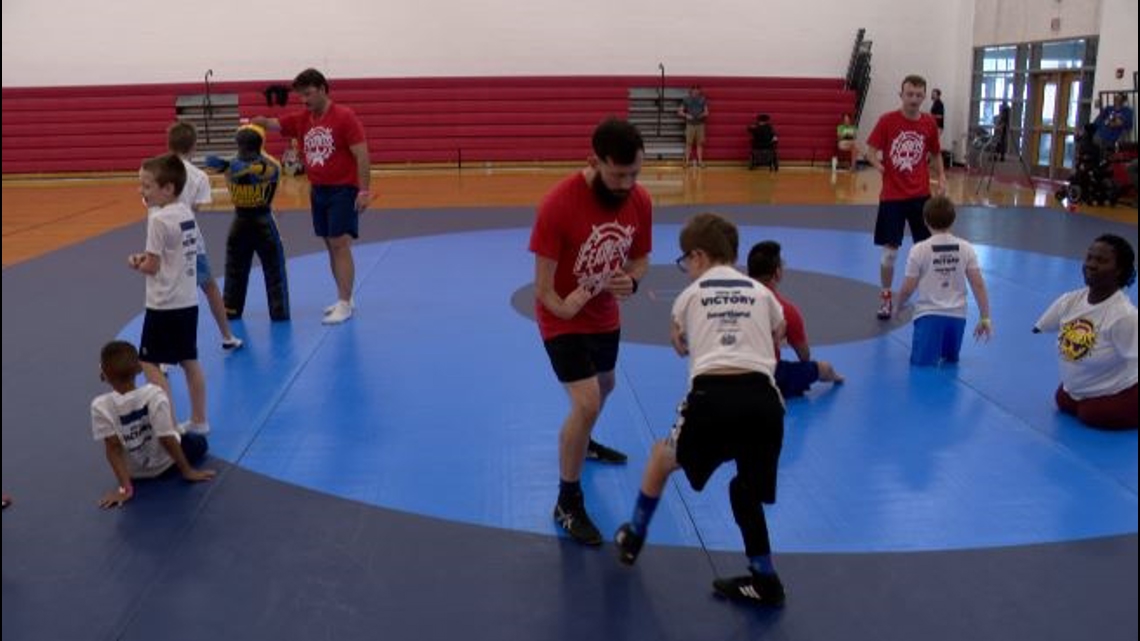
By the end of the week, the campers leave with memories and friends for a lifetime, and perhaps a newfound courage to face their challenges with confidence.
“Knowing that you were created perfectly just the way you are. You can do anything you put your mind to. You’re not put in this situation to struggle, you’re put in this situation to thrive, and we’re going to show you how,” Kuhnert said.
“Looking at all these people who are different, you can watch them and learn from them and look up to them,” Daily said. “They will push you hard, and it will be challenging and exhausting but it is fun and it is worth it.”
For more information on NubAbility, visit their website at NuAability.org.
Rec Sports
Youth Soccer Roundup | News, Sports, Jobs
U10 GIRLS SRS Building Products defeated Dog Moms 2-0. Goals were made by Isabella Nails and Novaleigh Moreno. —— SRS Building Products won over Kaczar Collision 2-0. Isabella Nails scored both goals for Falconer. SWSC U8 Vivenne Babcock, Liam Zambotti and Cadan Carter scored a goal apiece to lead Blue Stedman Energy to a 3-0 […]

U10 GIRLS
SRS Building Products defeated Dog Moms 2-0.
Goals were made by Isabella Nails and Novaleigh Moreno.
——
SRS Building Products won over Kaczar Collision 2-0.
Isabella Nails scored both goals for Falconer.
SWSC U8
Vivenne Babcock, Liam Zambotti and Cadan Carter scored a goal apiece to lead Blue Stedman Energy to a 3-0 win over Blackstone.
Greyson Gaeta led the way defensively for the winners, who had Axyl Fraley in goal.
——
Keppel Crew defeated Dave Warren 4-0.
Goal scorers for Keppel Crew were Nolan Jenkins with three goals and Cameron MacIntyre with one goal.
Keppel Crew’s standout defender in the game was Mason Osborne.
——
Stedman Energy beat Miles Machine 3-1.
Tyler Pineda scored twice and Cadan Carter scored once for Stedman Energy. Greyson Gaeta was the top defender and Axyl Fraley was the top goalkeeper for the winners.
JAYS U8
Rodgers Land Surveying beat Honest John’s 4-0.
Goal scorers for the Rodgers Land Surveying were Niko Knight with two goals, as well as Rocco Yarber and Isaac Anderson with a goal apiece.
Goalkeepers for Rodgers Land Surveying were De’Vontae Cottom, Niko Knight, Remy Robles and Isaac Anderson.
Goalkeepers for Honest John’s were Aurora Caldwell, Preston Fusco-Allette, Emme Johnson and Elliot Panebianco.
——
Trophy House beat Fessenden, Laumer & DeAngelo 4-2.
Goal scorers for Trophy House were Jordy Berg with three goals and Max Meyer with a goal.
Goal scorers for Fessenden, Laumer & DeAngelo were Elliot Rodriguez and Westen Reeves. Goalkeepers for Trophy House were Mylo Crawford, Jaylen Mitchell, Olivia Michael and Naomi Anderson.
Goalkeepers for the Fessenden, Laumer & DeAngelo were Carson Spare, Jaelani Santiago Arroyo, Elliot Rodriguez and Amelia Guzman.
——
AFSCME Local #418 beat The Post-Journal 2-0.
Goal scorers for AFSCME Local #418 were Makeira Martinez and Moise Mulonda.
Goalkeepers for AFSCME Local #418 were Colten Martin, Evan Anderson, Taylyn Hannold and Abagail Becker.
Goalkeepers for The Post-Journal were Jackson Constantino, Mikey Paterniti, Indy Hall and Cameron Overbeck.
——
Pearl City Cycle tied Lena’s Pizza 0-0.
Goalkeepers for Pearl City Cycle were Alvie Peterson, Eden Langworthy, Emmy Madden and James Brinson.
Goalkeepers for Lena’s Pizza were DJ Figueroa, Amiah Benitez, Norah Cruz and Julius George.
——
Rodgers Land Surveying beat Trophy House 3-1.
Goal scorers for Rodgers Land Surveying were Niko Knight with two goals and Ze’Vontae Cottom with one goal.
Jordan Berg scored a goal for Trophy House.
Goalkeepers for Rodger’s Land Surveying were Liam Waite, De’Vontae Cottom, Ze’Vontae Cottom and Remy Robles.
Goalkeepers for Trophy House were Vince Robbins, Jordan Berg, Grayson Dossey and Emily Billquist.
——
Honest John’s beat The Post-Journal 1-0.
Leo Bell scored the goal for Honest John’s.
Goalkeepers for Honest John’s were Addy Anderson, Armani Cruz, Jerrica Plachotnik and Emme Johnson.
Goalkeepers for The Post-Journal were Aryan Tellinghuisen, Jackson Constantino, Indy Hall and Layla Sprague.
——
AFSCME Local #418 topped Pearl City Cycle 3-1.
Makeira Martinex scored all three goals for AFSCME Local #418.
Nathan Southard scored the goal for Pearl City Cycle.
Goalkeepers for AFSCME Local #418 were Taylyn Hannold, Scarlet Dawson, Silas Basdeo Jr. and Evan Anderson.
Goalkeepers for Pearl City Cycle were James Brinson, Elin Fagerstrom, Christ Fish and Alvie Peterson.
——
Fessenden, Laumer & DeAngelo tied Lena’s Pizza 1-1.
Eli Rodriguez scored the goal for Fessenden, Laumer & DeAngelo.
DJ Figueroa scored the goal for Lena’s Pizza.
Goalkeepers for Fessenden, Laumer & DeAngelo were Jackson Wyant, Amelia Guzman, Colton Glover and Logan Delahoy.
Goalkeepers for Lena’s Pizza were Graham Ferguson, Gino Guevara, Amiah Benitez and Esai Holmes.
JAYS U6
Texas Orange beat Red 2-0.
Elias Foust and Emersyn Weaver scored for orange.
Goalkeepers were Nahla Kercado, Nico Yarber, Emerson Weaver and Lainey Fagerstrom.
Goalkeepers for Red were Zoey Isaman, Damoni Wilcher, Tayleigh Sanchez and Talula Whitmore.
——
Carolina Blue beat Forest Green 4-0.
All four goals were scored by Zyan Anderson.
Goalkeepers for Carolina Blue were Zyan Anderson, Avery Ferrara, Ne’Kyle Taylor Jr. and Elaina Stafford.
——
Neon Yellow beat Black 3-0.
Tommy Lisciandro scored twice and Colton Davidson scored once for Neon Yellow.
Goalkeepers for Neon Yellow were Reyna Snow, Sophia Cardone, Amelia Snow and Mason Canby.
FAYS U6
The Post-Journal beat Dole Studio 8-1.
Goal scorers for The Post-Journal were Talon VanOrd and Baylor Horton.
Everett Ingrao was the scorer for Dole Studio.
——
Dole Studio tied Southern Tier Family Dentistry 3-3.
Goal scorers for Dole Studio were Hadley Morgante and Everett Ingrao.
Amelia Clark and Blake Spicer scored for Southern Tier Family Dentistry.
Rec Sports
Skinner, Sowah Earn Gold Medals; Koabel Gears Up for FIBA 3×3 Youth Nations League
DURHAM, N.C. – Duke women’s basketball rising freshman Emilee Skinner and former standout Miela (Goodchild) Sowah capped competition at their respective FIBA events at the top of the mountain as the pair helped lead their clubs to gold medals Sunday. Skinner and USA Basketball captured FIBA U19 Women’s World Cup gold – the fourth straight […]
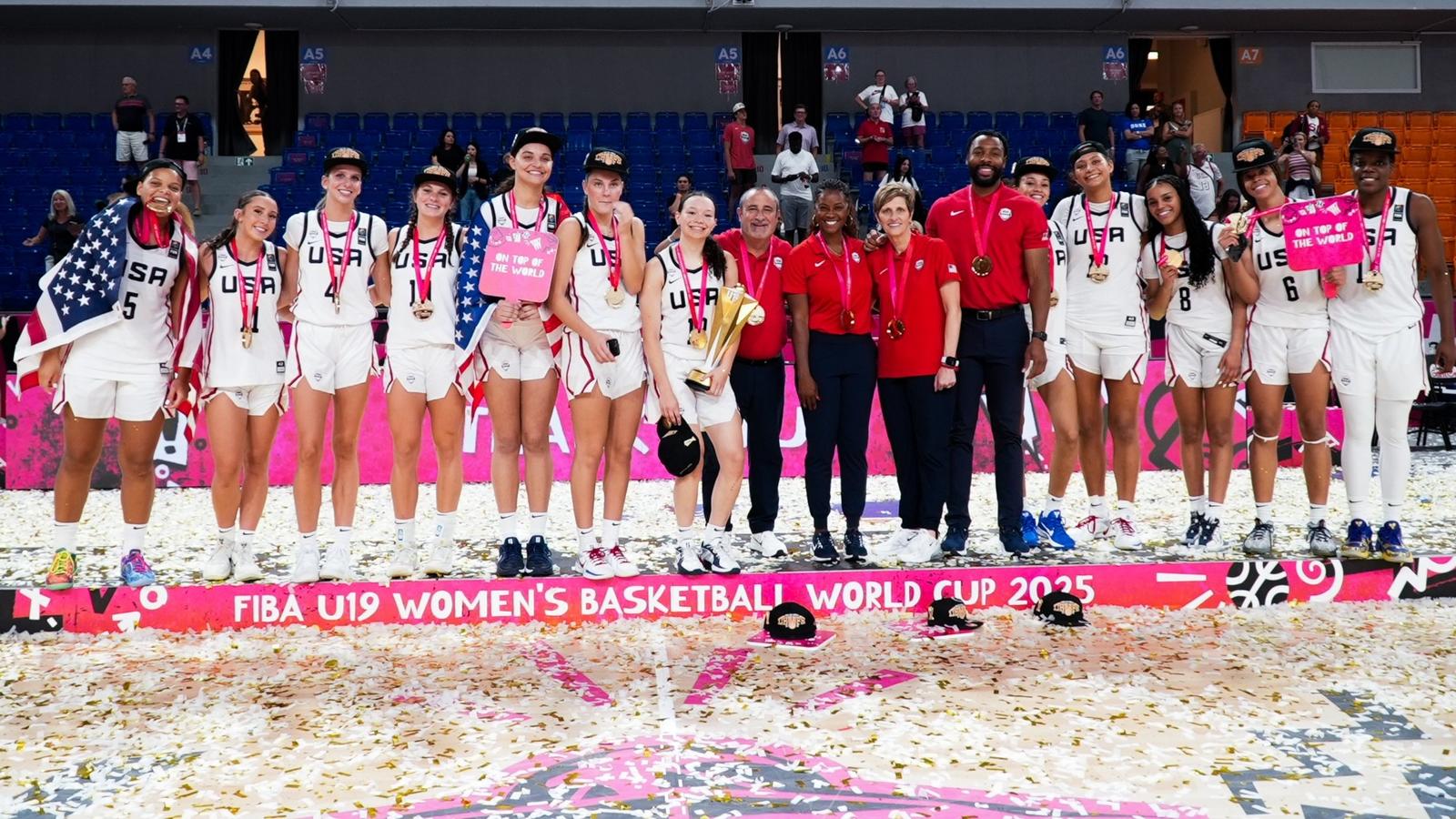
Skinner and USA Basketball captured FIBA U19 Women’s World Cup gold – the fourth straight for the United States – by way of an 88-76 victory over Australia, while Sowah and the Australian Opals secured their first FIBA Women’s Asia Cup title after dispatching Japan, 88-79.
Sowah helped Australia surge to a 5-0 mark and lock down the automatic berth to the FIBA Women’s World Cup 2026, set to take place in Berlin, Germany. She appeared in all five games for Australia and averaged 6.6 points in 9.5 minutes per contest. Sowah opened the event with back-to-back games in double figures, pouring in 19 points on 7-for-10 shooting against the Philippines, then netting 10 points versus Lebanon.
Skinner aided the red, white and blue to an unblemished 7-0 record at the U19 Women’s World Cup, which saw the United States extend its win streak to a record 28 straight games with victories over China, France, Hungary, Israel, Korea and Spain, in addition to Australia. Skinner saw action in all seven tilts for the United States putting up 5.0 points, 3.9 rebounds and 1.7 steals per game. The Providence, Utah product posted highs in points (11), rebounds (6) and steals (4) against Korea and in assists (5) versus China.
FIBA 3×3 Nations League 2025 – Americas 2 (July 21-27)
Rising senior Emma Koabel and Team Canada are slated to tip FIBA 3×3 Youth Nations League 2025 Americas 2 competition, which is set to take place July 21-27 in Punta Arenas, Chile. Koabel and Canada get Americas 2 action going with stop 1, which features games against the United States (2:30 p.m. ET) and the Cayman Islands (3:20 p.m. ET) July 21.
Koabel, a product of Port Colborne, Ontario is set to make her third appearance with Team Canada, most recently competing as a member of the 2023 FIBA U19 Women’s World Cup squad that earned the bronze medal. She also played on Canada’s 2021 U19 team that finished fifth at the Women’s World Cup.
Along with Koabel, the Canadians’ six-member women’s squad – led by head coach Dianna Ros – includes Rebecca Demeke (Toronto, Ont.), Marah Dykstra (Vancouver, B.C.), Alphonsia Eleko (Montreal, Que.), Gage Grassick (Prince Albert, SK) and Mackenzie Smith (Shelburne).
All FIBA 3×3 Youth Nations League 2025 games will stream live on YouTube each day via the FIBA 3×3 YouTube Channel.
To stay up to date with Duke women’s basketball, follow the team on Twitter, Instagram and Facebook and subscribe to the YouTube channel by searching “DukeWBB.”
#GoDuke
Rec Sports
Big Sky Conference football players mic’d up at youth clinic in Spokane
SPOKANE, Wash. — Players representing teams from the Big Sky Conference instructed kids during a youth football clinic at North Central High School on Saturday. Two players from each of the Big Sky’s 12 football members were in attendance at the camp, which drew dozens of local kids ready to go through drills and try […]
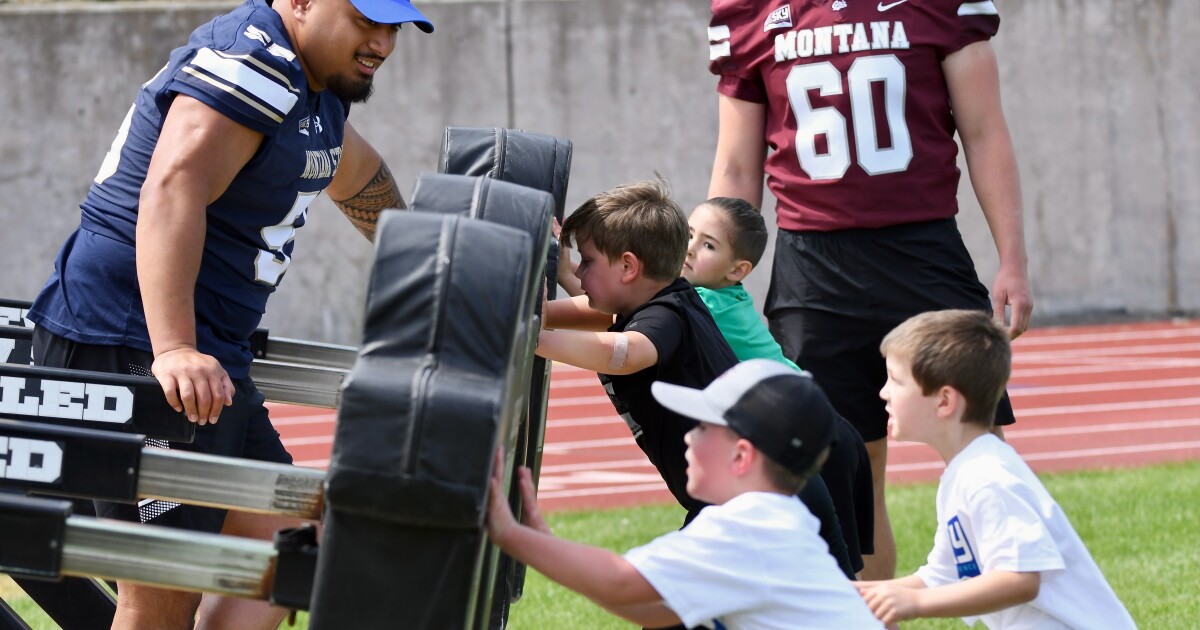
SPOKANE, Wash. — Players representing teams from the Big Sky Conference instructed kids during a youth football clinic at North Central High School on Saturday.
Two players from each of the Big Sky’s 12 football members were in attendance at the camp, which drew dozens of local kids ready to go through drills and try to beat some of the best players from the Big Sky.
Photos: Big Sky Conference football players put on youth clinic in Spokane
Montana defensive lineman Kellen Detrick, Montana State offensive lineman JT Reed and UC Davis defensive back Rex Connors put on a microphone during the camp to provide a fun look at the sights and sounds from the event.
WATCH THE VIDEO:
Big Sky Conference football players put on youth clinic in Spokane
-

 College Sports2 weeks ago
College Sports2 weeks agoWhy a rising mid-major power with an NCAA Tournament team opted out of revenue-sharing — and advertised it
-

 Motorsports2 weeks ago
Motorsports2 weeks agoTeam Penske names new leadership
-

 Youtube3 weeks ago
Youtube3 weeks ago🚨 BREAKING: NBA MVP Shai Gilgeous-Alexander signs the RICHEST annual salary in league history
-

 Sports2 weeks ago
Sports2 weeks agoNew 'Bosch' spin
-

 Sports5 days ago
Sports5 days agoVolleyball Releases 2025 Schedule – Niagara University Athletics
-

 Fashion7 days ago
Fashion7 days agoEA Sports College Football 26 review – They got us in the first half, not gonna lie
-

 Sports2 weeks ago
Sports2 weeks agoE.l.f Cosmetics Builds Sports Marketing Game Plan Toward Bigger Goals
-

 College Sports2 weeks ago
College Sports2 weeks agoMSU Hockey News – The Only Colors
-

 College Sports1 week ago
College Sports1 week agoBuford DB Tyriq Green Commits to Georgia
-

 Health7 days ago
Health7 days agoCAREGD Trademark Hits the Streets for Mental Health Month






























